Trump Administration Affirms Science Behind Climate Change...Now What?
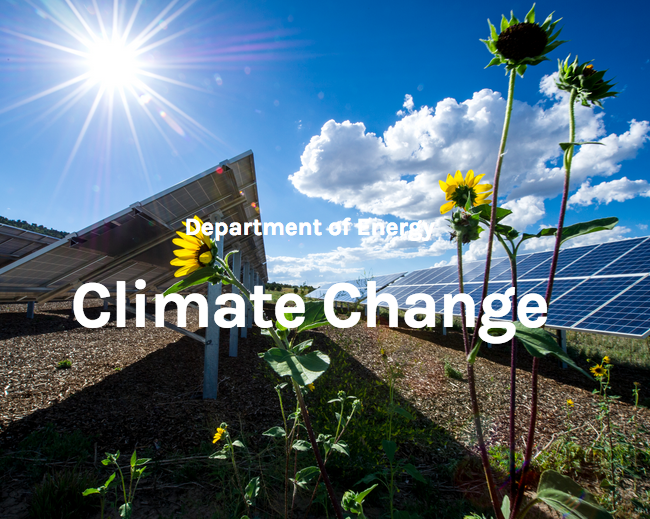

Holy news dump, Batman! Last Friday, the Trump administration quietly released a major federal report affirming the scientific consensus on climate change: it is real, and it is caused by humans. The new report will probably have little impact on the pro-coal rhetoric emanating from the White House, but it provides new support for investors and business leaders who are pushing to accelerate the global transition to sustainable energy.
13 federal agencies can't be wrong
The new report was released under the somewhat workaday title, "Climate Science Special Report." It is a product of the US Global Change Research Program, which was established in 1989.
Thirteen federal agencies collaborate in the Global Change Research Program under the slogan, "Thirteen Agencies, One Vision: Empower the Nation with Global Change Science."
Three of these agencies -- NOAA, NASA and the Department of Energy -- served on the steering committee responsible for selecting the scientists who produced the report.
The central role of the Energy Department in the new report is somewhat ironic, considering that Energy Secretary Rick Perry has been going out of his way to promote coal and undercut the consensus on climate science, but that's a whole 'nother can of worms. Despite Perry, the DOE website still includes a robust collection of climate information and the agency is moving full steam ahead with coal-killing initiatives.
As for the Climate Science Special Report, that's just one part of the Fourth National Climate Assessment produced by the Global Change Research Program. It is intended to be a standalone, authoritative snapshot of the current state of climate change science.
The purpose of the report is to foster an informed environment for assessing risks and pursuing policy options, so it is tightly focused on the state of the science. So, for example, it does not delve into mitigation scenarios or economic outcomes.
So, Is Climate Change For Real?
The new report is reader-friendly and well worth the time, but for those of you on the go the authors provide a brief executive summary that, well, sums it all up:
This assessment concludes, based on extensive evidence, that it is extremely likely that human activities, especially emissions of greenhouse gases, are the dominant cause of the observed warming since the mid-20th century.
According to the report, the global average temperature rose by approximately 1.8 degrees Fahrenheit between 1901 and 2016, giving rise to a network of related trends that are expected to continue:
This period is now the warmest in the history of modern civilization. The last few years have also seen record-breaking, climate-related weather extremes, and the last three years have been the warmest years on record for the globe.
The executive summary underscores that the increase in average global temperature is just one aspect of climate change:
Thousands of studies conducted by researchers around the world have documented changes in surface, atmospheric, and oceanic temperatures; melting glaciers; diminishing snow cover; shrinking sea ice; rising sea levels; ocean acidification; and increasing atmospheric water vapor.
The result is a growing risk to human health and safety from extreme events including heavy rainfall, forest fires, heat waves and chronic drought.
And, the report is pretty clear that there is one, and only one effective policy option for climate change risk mitigation:
Without major reductions in emissions, the increase in annual average global temperature relative to preindustrial times could reach 9°F (5°C) or more by the end of this century. With significant reductions in emissions, the increase in annual average global temperature could be limited to 3.6°F (2°C) or less.
Investors step it up on climate action
Adding fuel to the fire, the new climate change report notes that the rate of transition to a low carbon economy is not fast enough to avert catastrophic warming:
...In 2014 and 2015, emission growth rates slowed as economic growth became less carbon-intensive. Even if this slowing trend continues, however, it is not yet at a rate that would limit global average temperature change to well below 3.6°F (2°C) above preindustrial levels.
That observation is consistent with a strong private sector effort to accelerate the transition to renewable energy.
Last April, for example, the green investment organization Ceres partnered in a study of Fortune 500 companies that indicated a rapid acceleration:
...Nearly half of Fortune 500 companies – 48 percent – have at least one climate or clean energy target, up five percent from an earlier 2014 report. Accompanying this growth is rising ambition, with significant numbers of companies setting 100 percent renewable energy goals and science-based GHG reduction targets...
If you caught that thing about "science-based" greenhouse gas targets, that's why the new Climate Science Special Report could have a significant impact on the pace of change, with or without help from the Trump administration.
Leading companies are serious about climate action and they depend on science-based facts to support corporate strategies that help reduce risks.
The emphasis on scientific consensus can also aid the efforts of investment firms like Vanguard, which has been urging corporations to be more transparent about climate risks.
Aside from growth within the renewable energy industry, Bloomberg notes that petroleum stakeholders begun pivoting to clean energy. Interestingly, this transition is not narrowly focused on biofuels. According to Bloomberg, biofuel investments by "big oil" have waned in recent years but wind and solar are picking up.
In addition, the U.S. coal industry is rapidly approaching a state of collapse. The Trump administration has so far proved unable to stem the tide of coal power plant closures, and Trump is also now faced with the first coal company bankruptcy under his presidency.
In another tipping point sign, at least 40 U.S. cities have set 100 percent renewable energy goals.
President Trump has any number of reasons to ignore the scientific consensus on climate change, but it looks like the world is moving ahead without him.
Photo (screenshot, cropped): US DOE.
When Boycotts Work: Sleeping Giants Successfully Targets Breitbart Mega Donor

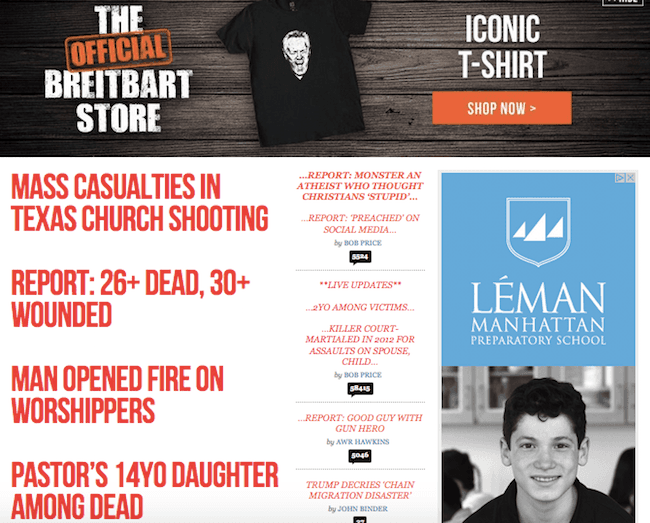
November marks the one-year anniversary of the launch of Sleeping Giants, a Twitter-based campaign with an open-source model. The campaign aims at putting the conservative organization Breitbart News out of operation -- or at least, reducing its influence. At first the campaign seemed like a long shot, but in an odd twist Breitbart's financial backer has just announced that he is dropping the reins of ownership.
This sounds like the beginning of the end for Breitbart, but the organization may yet survive to spread its message into the crucial 2018 midterm Congressional election cycle.
Why boycott Breitbart?
For those of you new to the topic, Sleeping Giants focused its energy on Breitbart News because of the organization's role in amplifying, and contributing to, the "hate speech" rhetoric of the 2016 Trump presidential campaign.
The connection was cemented by Breitbart chairman (and Trump advisor) Steve Bannon, who famously referred to the organization as the "platform of the alt-right" (alt-right is an invented term that refers to the white nationalist movement).
Aside from its Twitter account, Sleeping Giants also maintains a Facebook page with this explanation:
...Sleeping Giants is dedicated to stopping racist, sexist, anti-Semitic and homophobic news sites by stopping their ad dollars. Because of "programmatic" ad buying, many companies don't even know they are appearing on these sites. We inform them and help them with advice on taking their ads down.
In that regard, Sleeping Giants is not a conventional consumer boycott. Consumer boycotts are difficult to sustain and it is almost impossible to convince brand loyalists to turn their backs. In that regard, it would arguably be a waste of time to try convincing Breitbart readers to stop visiting the site.
Instead, Sleeping Giants focuses narrowly on businesses. The strategy has been a resounding success, at least in terms of stopping ad buys. The campaign seemed to be having a significant impact on revenue at Breitbart within just a few months, as noted by TriplePundit (among others) last spring.
Last Thursday, the campaign reported that more than 3,400 advertisers had dropped Breitbart from their ad buys.
How Breitbart survived the boycott
Painful as it was, the drop in ad revenue did not drive Breitbart out of business. The organization was supported by billionaire hedge fund manager Robert Mercer.
Mercer is a relatively new name on the political scene. Like the now-notorious Koch brothers, he had been keeping a low profile while supporting a network of conservative causes, including the Heartland Institute. His various contributions -- financially and otherwise -- to the 2016 Trump campaign are credited with catapulting the former reality TV star into the White House.
That changed last February, when Mercer publicly acknowledged his financial support for Breitbart News.
In March, reporter Jane Mayer of The New Yorker dug deeper, and described a web of racism underlying Mercer's support for Breitbart.
The media spotlight grew brighter, and it proved an uncomfortable one. Another burst of attention occurred last month, on October 5, when Buzzfeed News published a Breitbart expose under the title, "Here's How Breitbart and Milo Smuggled Nazi and White Nationalist Ideas Into The Mainstream."
The article was based on a "cache of documents" revealing:
...how the website — and, in particular, [Milo] Yiannopoulos — links the Mercer family, the billionaires who fund Breitbart, to underpaid trolls who fill it with provocative content, and to extremists striving to create a white ethnostate.
When boycotts work: investors step in...
Though the Buzzfeed article did not gain much traction in the mainstream press, Sleeping Giants took the opportunity to extend its boycott to include investors in Renaissance Technologies, the hedge fund managed by Mercer. On October 24, Bloomberg reported on the Sleeping Giants effort:
Sleeping Giants, whose members are anonymous, began the campaign Monday by targeting Michigan State University, which has about $50 million invested in a Renaissance fund. The group said in a statement on Twitter that it aims to draw a connection between investments in Renaissance and “hate speech and bigotry.”
If Buzzfeed failed to tap into the mainstream, Bloomberg punched through. B-to-B news organizations like Institutional Investor took note of the Sleeping Giants campaign:
Sleeping Giants — the advocates that helped topple Bill O’Reilly from Fox — have mobilized to pressure investors into ditching the controversial hedge fund.
Barely two weeks later after the Bloomberg article appeared, Mercer touched off a media firestorm when he announced that he was selling his stake in Breitbart News, also selling his take in Renaissance and stepping down as CEO.
Sleeping Giants could take at least partial credit for the dramatic move. Last week, for example, the New York Times reported that at least one institutional investor dropped Renaissance as a direct result of media attention.
Aside from any pressure from investors, Mercer may have also faced internal blowback from Renaissance founder James Simons, who contributed significantly to Hillary Clinton's presidential campaign.
...or did they?
On the other hand, the picture is complicated by Mercer's stake in the data firm Cambridge Analytica. The company has been reportedly tied to Russia-linked propaganda efforts, partly through his daughter Rebekah.
Federal investigators have been exploring that connection, so it's possible that Mercer stepped down to roll up the carpet, so to speak, in case he is called to testify.
In a letter to employees, Mercer framed his ties to Breitbart in general and Yiannopoulos in particular as an expression of libertarian thinking:
"I supported Milo Yiannopoulos in the hope and expectation that his expression of views contrary to the social mainstream and his spotlighting of the hypocrisy of those who would close down free speech in the name of political correctness would promote the type of open debate and freedom of thought that is being throttled on many American college campuses today," Mercer wrote.
That's a somewhat more elaborate way of articulating the contrarian, "different thinking" argument promoted by Facebook founder Mark Zuckerberg, among others, to justify the inclusion of extremist positions in corporate decision making.
However, a more down-to-earth concern for Mercer could be the reported $7 billion in back taxes owed by Renaissance to the U.S. government.
As for Breitbart, the organization can probably still count on publishing indefinitely, as Mercer's plans include selling his stake to Rebekah Mercer.
In other words, this boycott ain't over, 'til it's over.
Image: screenshot, via breitbart.com.
Why Community Forests are Key to Solving Challenges of Urban Living


By Dan Lambe, President, Arbor Day Foundation
What comes to mind when you think of forests? Do they conjure feelings of tranquility, scenic landscapes, and wildlife? Or maybe you think of the great outdoors? Although these sentiments are commonly tied to forests, there is another type of forest that is rarely talked about but is key in responsible forestry: community forests. As the world becomes more urban, now is the time to invest in healthy community forests.
Municipalities have started to recognize the economic, environmental, and social value of trees in community infrastructure. Strategically planted trees can save municipalities money, improve the quality of life for residents, and lead to happier communities as a whole. And because everyone can agree on trees, it is easier for public and private businesses to get involved in growing tree canopy goals, increase employee engagement, and strengthen their presence in the communities they live in. Trees are a sustainable solution to many urban challenges and they’re finally coming to the forefront.
In 2016, Tree City USA — a program of the Arbor Day Foundation that sets the framework for forestry management programs — reached a record number of involved communities. Towns and cities of all sizes are investing in urban forestry. Collectively, communities spent $1.1 billion last year in forestry management.
This investment in urban forests can save municipalities millions of dollars every year. In fact, in many cases, an urban forest makes municipalities money. For example, Denver saves an average of $6.7 million every year on energy costs alone because of the city’s urban forest. This doesn’t take into account the functional benefits and savings trees provide such as stormwater management, windbreaks, noise control, and privacy.
Communities with a dense urban forest spend less on stormwater management costs because trees absorb excess rainwater. This runoff then drains into watersheds and other waterways, cleansing water along the way. More than 180 million Americans depend on forests for their drinking water, so this natural filtration process is essential to a healthy water supply and has proven more cost-effective than water treatment plants.
One of the ways urban forests improve the quality of life in communities is by sequestering carbon and other airborne pollutants. In Chicago, trees remove more than 18,000 tons of air pollution each year, and roadside trees can reduce nearby indoor pollution by more than 50 percent. Additionally, evaporation from leaves removes heat energy, keeping cities cool and reducing the heat island effect.
Let’s not forget the social benefits of trees, either. According to a NeighborWoods Month survey conducted by Wakefield Research, 95 percent of Americans identify shared benefits of having more trees in their communities. With 80 percent of Americans living in stressful urban environments, residents need the health and wellness benefits of trees.
Studies find that neighborhoods with trees report less crime. In Baltimore, a 10 percent increase in tree canopy corresponded to a 12 percent decrease in crime. Trees reduce stress and improve health. In fact, 94 percent of Americans believe trees in their community make them happier. This paves a path for public and private organizations to get involved in growing community forests.
Companies can help grow urban forests by supporting local tree planting efforts. Tree plantings can promote corporate sustainability initiatives, strengthen brand presence, and engage company employees. Procter & Gamble partnered with the Arbor Day Foundation and TakingRoot, a grassroots organization dedicated to conserving and improving Cincinnati’s tree canopy, to celebrate NeighborWoods Month, the annual campaign to plant and care for trees during the month of October.
Volunteers from Procter & Gamble, Arbor Day Foundation, and TakingRoot helped plant trees at a local Cincinnati school. The collaborative project was engaging and educational. Students at Pleasant Hill Academy helped plant trees and learned about their value. The new trees will increase Cincinnati’s tree canopy that is at risk after the outbreak of Emerald Ash Borer and yield benefits that the community will enjoy for generations to come.
Responsible forestry starts right here in our towns and cities. The trees we plant today will have a cumulative impact on communities across the nation. Urban forests save municipalities money, improve the quality of life for residents, and address many of the urban challenges cities face such as air pollution, water quality, and energy use. Green infrastructure only appreciates in value over time. Trees make healthier and safer communities. If ever there was a time to plant trees in our communities, now is that time.
How Good Amplifies the Value of Sports Partnerships
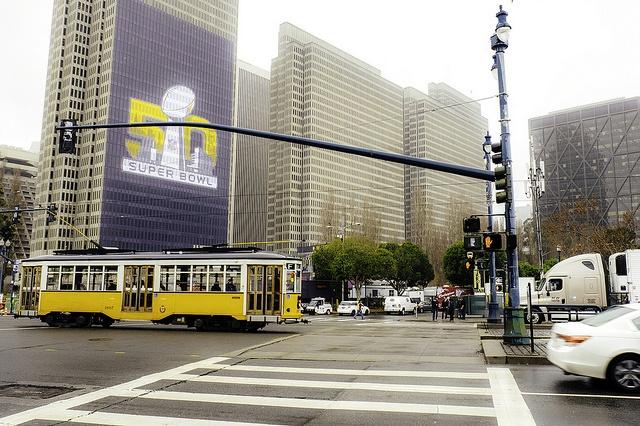

By Lesa Ukman
Businesses that mean more, make more.
And, sponsors who dedicate a portion of their activation budget to improving people and planet, almost always out-perform sponsors without a purpose-based overlay.
Uniting brands and fans, and the sports and entertainment they love, around collective action for social good is a more powerful cocktail than any of these pieces on their own. It goes beyond marketing, cause marketing and sports marketing into helping to effect substantial social change.
Each player has something the other needs. Commercial partners have financial resources and distribution channels, nonprofits have knowledge about a problem and how to fix it, and rightsholders have the cultural spotlight, media platforms and loyal communities.
But sports have a special role to play. The power of sports to bring people together on a much deeper level than other types of businesses puts them in a position to both incorporate positive change and advance it.
Brazilian pro team Sport Club Recife, known as having some of the most passionate football fans in the country, launched a program created by Ogilvy Brazil called “Immortal Fans” to combat the lack of organ donors in the country. Within the first year, heart transplants had quadrupled and the waiting list for corneal transplants was eradicated.
In response to a survey showing 82 percent of the French population had a negative opinion of the national football team, the French Football Federation created a program to connect unemployed fans with the companies of the sponsors.
To ensure there would not be ill will created by its hosting of the Super Bowl, the San Francisco Super Bowl 50 Host Committee committed 25 percent of all monies raised for Super Bowl 50 to be invested back in Bay Area communities. This prompted the NFL to make a $1 million grant to 50 Fund as part of its annual Super Bowl Legacy Grant Program.
And, sports act as high profile advocates, changing attitudes and behavior. When racial tensions escalated on the campus of the University of Missouri and the administration failed to take action, student groups protested for President Tim Wolfe to resign. After two months of no results despite clear instances of racism on campus, athletes of color on the Missouri football team took a stand. They refused to play until their voices were heard. Thirty six hours later President Wolfe stepped down.
And, the first Refugee Olympic Team competed in the 2016 Olympic Games in Rio. Recognizing the opportunity to a global audience to take action in support of refugees, UNICEF and UNHCR commissioned a series of social media graphics with the hashtag, #TeamRefugees. It included video and editorial content, Snapchat stories, microsite, rapid response memes and influencer strategy and led to impressive organic social media engagement around refugee issues. The brand and hashtag reached over 500 million impressions, received the second largest spike of the year in positive Twitter mentions of refugees and some three in four Team Refugees tweeters were reportedly new to the cause.
Sports and sports sponsors can raise awareness around underexposed issues, spark important conversations and shift public opinion. They play a huge role in people-powered social movements around big issues like LGBTQ rights and climate change which require the ability to organize a large community, reach them during moments inspiration and build sustained, long-term engagement. Fans bring these elements to sports and music.
Using sports and entertainment partnerships as channels to activate social initiatives and/or add pro social overlays to sports and entertainment has advantages that cannot be duplicated by other media.
Research reveals that simply ‘badging’ a sport or event is regarded as superficial and inadequate. Fans and the public expect and want more. For example, research commissioned by Lloyds around its sponsorship of the British Olympic Team, found that Olympic sponsorship on its own increased brand appeal: forty percent of customers aware of the bank’s Olympic sponsorship would likely recommend the brand to friends and family.
However, 55 percent of customers aware of the bank’s Olympic sponsorship and its Local Heroes Olympic-themed community overlay had a higher propensity to recommend the brand to friends and family.
A Performance Research study conducted in March 2017 looked at what most impacted purchasing. Sports sponsorship came in at the lowest at 32 percent while support of good causes had the greatest impact on purchase, 72 percent of respondents said it would factor into buying decisions:
The conclusion is not to quit sports and dump money into causes. Instead, sports sponsors should use the reach of sport to let people know what they are doing in the area of social good.
Given the importance of social good to corporate partners and prospects, all sports rightsholders should be proactive in building out their offerings in this space. Rather than the league or team foundation working in a silo, relevant assets should be used to upsell current partners and attract new companies and categories. The real win for all is when there’s substance. Take the Cincinnati Reds’ Urban Youth Academy, an after-school program for inner city kids that pairs tutoring by graduate students from the University of Cincinnati with on-field training, often led by current and former Reds players. Designed to break the cycle of poverty and prepare underserved kids to become the first in their family to go to and graduate college, the Academy hosts games, tournaments and camps as well as educational and vocational programs out of its four classrooms. Team sponsor Procter & Gamble, also sponsors the Academy providing both cash and employee volunteers who act as mentors.
Yes, sports sponsorships and nonprofit partnerships each work on their own. But, when combined, they can work measurably better.
Lesa Ukman is a thought-leading entrepreneur, writer and speaker in assigning value to marketing collaborations. In 1982, Lesa founded IEG in Chicago and built a company that spawned a new industry, one currently worth more than $85 billion. In 2006 she sold IEG to WPP, the world’s largest advertising, marketing and communications services group. Lesa is an avid champion of sponsorship’s potential for a broader impact on society and has now launched ProSocial Valuation as she believes in the fundamental power of business to do good.
Call to game-changing businesses shaping the future to enter the Responsible Business Awards 2018
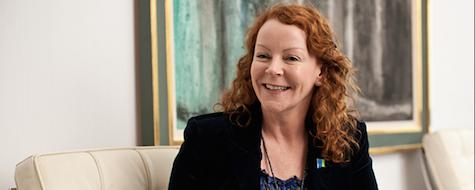

Business in the Community is inviting game-changing companies that are embedding responsible business innovation and best practice to enter the Responsible Business Awards 2018.
The mission of Business in the Community’s Responsible Business Awards 2018 is to highlight the untold stories of businesses that are driving positive changes in their operations both nationally, and internationally.
Entries open today, and companies of all sizes in the UK and abroad are invited to showcase what practical action they have taken to address social and environmental issues such as helping young people develop skills for the future, stimulating their local economy, supporting small businesses and using natural resources more efficiently.
The awards are free to enter, and open to businesses of any size, sector and location, with ten categories, including a new Connected Places Award, recognising how responsible businesses create partnerships with local communities to address long-term social and economic needs.
Chief Executive of Business in the Community Amanda Mackenzie said: “If you are a company that has done something remarkable in the responsible business space we want you to enter our awards. Inspire other companies, lead the way so that together we create healthy communities with successful businesses at their heart.”
Anglian Water was awarded Responsible Business of the Year 2017 for its ambitious five-year target to reduce carbon by 10%, and emissions from construction projects by 54%. The water company was among 16 other companies awarded for their responsible business programmes and activities, ranging from egg farmers to construction companies, to banks.
Business in the Community is also running a series of free workshops across the UK for companies to find out more about the awards. Book a free place at www.bitc.org.uk/awardworkshops or contact [email protected] for more details.
Birmingham 8 December
Bristol 5 December
Leeds - 28 November
Nottingham - 23 November
Manchester - 6 December
London - 30 November and 4 December
Ipswich - 7 December 2017
Durham, Bowburn - 7 December
The closing date for entries is 9 February 2018 (17:00 GMT).
For further information about the 2018 Responsible Business Awards, including the full list of categories, the assessment criteria and application forms visit http://www.bitc.org.uk/awards/responsible-business-awards.
Appetite for Destruction: The Environmental Toll of Livestock Production


There was a time when the soy plant was considered the world's unexpected savior: Man's appetite for meat, scientists and agricologists reasoned, could be tempered with products that resembled meat, but were fashioned from vegetables and grain. And just as importantly, it could be used to feed that livestock.
But according to a recent World Wildlife Fund report, that agricultural crop, which has grown to a billion-dollar industry across multiple sectors is taking its toll on the climate. According to a USDA Jan. 2017 press release, the number of acres cultivated for soy has been steadily growing in the U.S. and as of 2016, was up to more than 80 million acres, with the largest accumulation in Illinois.
That explosive growth of land turned to feed and food production -- which translated to more than 200 million tons of soy being produced globally in 2012 -- is having a decisive effect on wildlife, says WWF.
"The huge amount of land needed to produce protein-rich feeds such as soy is having devastating effects on species & their habitats, especially in vulnerable areas such as the Amazon, the Congo Basin & the Himalayas," the organization wrote in its newly released report, Appetite for Destruction. It estimates that more than 30 species extinctions across the globe are attributed to UK food supply demands alone.
Of course, the real problem isn't just the amount of land that is being converted to acreage for foodstock production but the demand for livestock that is overtaking forests, grasslands and other land that were once home to wildlife.
Poultry production alone has increased dramatically since the 1960s when it commanded 15 percent of the world's meat production. By 2012, the industry had more than doubled those numbers. The rationale of course was to keep up with the growing global human population's demand for nutritious food. an aim that it hasn't really been able to support in the industrialized setting, the writers explain.
"In 2014, there were over 23 billion chickens, turkeys, geese, ducks and guinea fowl on the planet – more than three per person." It adds that while meat production has expanded to keep up with commerce and human consumption, nutritional quality hasn't. Today, explain the writers, those mass-produced chickens actually have less omega-3 fatty acids than chickens produced in the 1970s. Consumers are actually not getting the nutrition they think they are getting, and the planet's "lungs" -- those forests that help slow climate change -- are disappearing.
The good news is that there's a lot more dialogue taking shape on this issue these days than there was a few years back. Major figures like environmentalist Chris Darwin (descendant of 19th century naturalist Charles Darwin), anthropologist Jane Goodall, DBE, and marine biologist Katherine Richardson are just a few of the experts that are speaking out on the inevitable impact that the livestock and feed industry will have on the world's ecology. And consumers are beginning to listen harder.
The bad news, says the UN, is that the window is closing to be able to protect the earth's top soil, which supports 95 percent of the food we eat, says Maria-Helena Semedo, deputy-director of natural resources for the Food and Agriculture Organization.
According to Semedo, about a third of the earth's soil has been degraded, either by pesticides, deforestation (which encourages soil erosion) or climate change. That loss will continue to affect not only food production but the planet's ability to sustain its ecology. The use of intensive farming and livestock production, which relies on chemical sources for pest management is being blamed as the root of the problem that is now becoming more evident through the effects of global warming.
Ongoing research into ways to reinfuse the earth's soil with microbes may give agrologists a way of heading off a loss of this valuable resource, which scientists say may be in peril in the next five decades.
In the meantime, environmental advocates like WWF are working to heighten consumers' awareness of the impact that the world's appetite for meat is having on the environment. They have developed a short list of pointers about ways that people can directly lobby for change: eat more vegetables and grains, less sugar and salt (the essentials to processed foods) and eat foods that are certified to standards like organic, free range and fair trade. Scientists are also advocating changes in how crops are grown, with ideas that pretty much echo the way our ancestors first fertilized their fields.
But if there is anything to be learned from intensive farming (and Mother Nature's own responses) it's that developing crops that are meant to solve the planet's insatiable demand for food may not be an exclusive answer. Balance between the resources we use and the methods we choose in the process, may be the key to a healthy planet.
Education and Empowerment: Powerful Tools for Girls in STEM


By Martha Rook
The push for young minds to pursue science, technology, engineering and math (STEM) careers is more prevalent now than ever before. While more and more educators and organizations are acknowledging this need, it is just as important to address the existing gender gap in STEM. According to the National Science Foundation, women make up half of the total U.S. college-educated workforce, but only 29 percent of the science and engineering workforce.
So how do we change perceptions and encourage girls to pursue STEM careers? The answer is simple, but the tools themselves are powerful: education and empowerment.
Armed with these two weapons, girls are unstoppable forces with the ability to make important breakthroughs. In fact, education and empowerment were integral themes in my own path to becoming a scientist. My fascination with science began in my middle school chemistry lab, where I was given the opportunity to take part in hands-on experiments. These types of science experiences are proven to help students develop problem-solving and critical-thinking skills—preparing them for STEM careers. I wanted to continue to fuel my passion beyond high school, so chemistry was an obvious major for my undergraduate studies. While at Texas A&M University, I immersed myself in science 24/7 and took advantage of the opportunity to do undergraduate research both at the university and through a summer science internship program at the United States Army Medical Research Institute for Infectious Diseases (USAMRIID). After I received my bachelor’s degree, I took my learning a step further, earning a Ph.D. in biochemistry from Massachusetts Institute of Technology. Education? Check.
While my education exposed me to the possibilities of a career in science and prepared me academically, I also had role models along the way who helped unveil my own potential. First and most important, my father, who was a scientist himself, was an influential force in my life. His passion for his work was contagious—having opened my eyes to a career as a scientist. As one of my biggest supporters on my journey, he always encouraged me to follow my passion for chemistry—which ultimately led me to where I am today. In addition to my father, my undergraduate advisor and the lieutenant colonel who supervised me at USAMRIID also served as mentors who inspired and guided me. Empowerment? Check.
While I was fortunate to have numerous opportunities that shaped my career in STEM, many girls (and boys) do not have the economic or educational/community resources to be exposed to STEM education in elementary or middle school. It’s critical to engage these children at a young age, considering four out of five STEM college students decided to study STEM in high school or earlier. To help bring these opportunities to girls, organizations such a Girlstart—the largest and longest-running community-based informal STEM education nonprofit in the nation designed to empower girls—are instrumental.
Through informal, nationally-recognized STEM programs—such as after-school programs, summer camps and conferences—Girlstart is fostering girls’ passion for STEM at a young age and encouraging them to pursue STEM-related careers. These programs not only help with STEM skills development, but also connect girls with role models. I know firsthand how important it is to have a mentor who can guide you, push you and believe in you. By making connections with women in STEM, girls are able to envision their future as a scientist, engineer, software developer, etc.
Girlstart recently celebrated its 20th anniversary at its annual Game Changers Luncheon. As Head of Genome Editing & Novel Modalities at MilliporeSigma—a long-time partner of Girlstart—I was given the opportunity to tell my own story as the keynote speaker. This event opened my eyes to the positive impact that I—along with the many other influential STEM women who attended—can make on girls’ lives. As we band together, we’re showing girls what they’re capable of when equipped with the right education and a mentor to match.
MilliporeSigma and Girlstart both understand the importance of having women represented in the sciences. In fact, 52 percent of R&D scientists at MilliporeSigma are women—demonstrating what’s possible with diversity in STEM. However, MilliporeSigma also recognizes that this representation of women may not be possible without early engagement, which is why we help inspire students through hands-on science education. Our Curiosity Labs™ program is designed to engage students through hands-on science lessons in classrooms around the world. These experiences are crucial in sparking scientific curiosity, especially since they allow students to interact with real-world scientists. To bring this important educational opportunity to even more young minds, we launched the Curiosity Cube™—a retrofitted shipping container turned mobile science lab. Inside the Curiosity Cube™, students conduct interactive, hands-on experiments that cover variety of science topics, such as DNA extraction, 3D printing and precision medicine. From January through October, the Curiosity Cube™ engaged 36,901 students through 22,140 lessons.
Both of these programs show how hands-on science experiences—similar to the ones I had in my middle school chemistry lab—can influence student perception. For example, 79 percent of students who took part in a Curiosity Labs™ lesson reported an increase in content knowledge following the lesson, while 80 percent demonstrated confidence in science—indicating that they know “quite a bit” or “very much” about science. Additionally, 77 percent of students said they were more interested in science after visiting the Curiosity Cube™ and 95 percent of students increased their understanding of life science terminology.
By equipping girls with the knowledge and confidence to solve the problems of tomorrow, Girlstart and MilliporeSigma are helping bridge the gender gap in STEM. And it can all be traced back to education and empowerment: two tools, endless possibilities.
Martha Rook is Head of Genome Editing & Novel Modalities at MilliporeSigma.
Agriculture in the Anthropocene: the Challenge is the Solution


“The ultimate goal of farming is not the growing of crops, but the cultivation and perfection of human beings.”
-Winston Churchill, The River War
And this isn’t the only challenge the agriculture sector faces in the coming decades. The world’s farmers not only must feed a growing population, but also cope with a rapidly changing climate.
Given the urgency of the climate crisis, agriculture is a big problem. Is it? Or is there another way to frame our outlook?
Farmers: on the front lines of climate change
Modern agriculture and land use are the second largest contributors to greenhouse gas emissions, right behind energy production.
The impacts on climate from agriculture are manifest. Carbon, methane, and N2O are the significant drivers. Especially N2O or nitrous oxide from fertilizer runoff and evaporation.
Farmers see the impacts of climate change every day. The deal directly with drought, floods, changing seasonal patterns, new pest infestation, and soil degradation.
Just as the agriculture sector directly impacts climate and environmental resilience, so too it can directly influence solutions to those impacts.
Putting agriculture on the table
Like energy production, agriculture is fundamental to human prosperity.
Unlike the energy sector, agriculture has largely been absent in the larger discussion of climate impacts and mitigation. This is not to say that climate and environmental impacts are not understood. But as Georgina Custin writes in Inside Climate News, not until the Paris Agreement, adopted over two chilly weeks in December 2015, that climate mitigation intersected on the global stage with agriculture.
"It's become possible to finally discuss the elephant in the room," Martin Frick of the UN Food and Drug Organization tells Custin in Inside Climate.
The impetus of this new focus on agriculture and land use stems largely from the Intended Nationally Determined Contributions. The INDCs are the core element of the Paris Agreement.
In the summary report Agriculture Sectors in the Intended Nationally Determine Contributions, the FAO summarizes:
The Food and Agriculture Organization of the United Nations (FAO) has analyzed the INDCs and found that the agriculture sectors (crops, livestock, forestry, fisheries, and aquaculture) feature prominently in meeting national mitigation contributions and adaptation objectives. This is a clear signal: the agriculture sectors are central to the response to climate change.
The flexibility of the INDCs propels agriculture, forestry, and land use (AFOLU) from relative obscurity into an important tool for climate mitigation. All sectors and all stakeholders must come to the table for any hope of living up to the promise of the Paris Agreement. Climate Smart agriculture sits at an exciting, if challenging, crossroads.
Monsanto and Climate Smart agriculture
“Collaboration is the essence of life. The wind, bees and flowers work together, to spread the pollen.” - Amit RayOn December 1, 2015, just as COP21 in Paris was getting underway, Monsanto committed to achieving operational carbon neutrality by 2021.
TriplePundit recently spoke with Jeff Seale, Agricultural Environmental Lead and Science Fellow for Monsanto about the company's climate policy, partnerships, and pathways to Climate Smart solutions.
For Seale, it starts with the science.
“The science is sound,” says Seale "...We know that climate change is real. We know that [climate change] is bad for the environment, bad for agriculture, and poses a threat to people around the world."
"We know it's time for us to do whatever we can to mitigate that."
Wait... Monsanto?
Monsanto is a global agricultural powerhouse. Once we agree on that, opinions get complicated. We shouldn't ignore the controversy, but I won't dwell on it here. TriplePundit's Editor in Chief Jen Boynton says it best: "The knee-jerk reaction to Monsanto as the root of all evil is not sound thinking."
"...we NEED everyone at the table if we’re going to solve global challenges and nourish 9 billion people in a warming world. And we don’t believe in bogeymen."
Climate Smart collaboration
Monsanto's strategy for Climate Smart Agriculture is collaborative. Internal methodologies and carbon pricing led holistically to application in the field.
"We work with our partners in a carbon neutral collaborative," Seale says, "a group of outside experts in greenhouse gases, agricultural modeling, and (carbon) accounting.
"The right size, the right data, and the right economics."
In future posts in this series, we dive deeper into specific Climate Smart solutions, from cover crops to GPS and database-driven precision farming.
But as important as best practices and technology are, Seale also emphasizes how important it is to take the long view, see the big picture.
Sustainable intensification
"It's just a problem, and problems get solved."- Ian Faith, band manager for Spinal Tap (satirical)
I write this on a computer, "magically" linked to a global community through electromagnetic waves bouncing around the globe. Each generation considers itself the pinnacle of human progress.
But arguably the greatest technical achievements of our species lay in our ancient past. If not for taming fire and planting, any potential civilization, as we understand it, would have had no foundation upon which we could stretch to the stars or write on computers.
Climbing higher into the clouds, we are cautioned not to forget where we rest our feet.
After all, a person’s gotta eat.
Photo by Gabriel Garcia Marengo on Unsplash
Solar Industry on Edge as U.S. Trade Commission Recommends Tariffs


Cheap imported solar panels have played a key role in the rapid expansion of solar installation. At the same time, U.S. solar manufactures (think Solyndra) have struggled to keep up with the price-per-watt achieved by overseas competitors.
The U.S. International Trade Commission (ITC) recently concluded that tariffs should be imposed on imported silicon-based solar photovoltaic cells and solar panels to make the competition easier for domestic outfits. The recommendations included a 10 to 35 percent tariff on foreign-made solar panels; a 30 percent levy on imported solar cells; and, a licensing fee on some equipment. Of course basic microeconomics tells us that these tariffs will increase installation costs and reduce demand for solar. So we have players from all sides of the solar industry fighting desperately for different outcomes to the tariff debate.
The ITC launched launched its investigation into the matter after two panel manufacturers, Solar World and Suniva (which has since filed for bankruptcy), complained about unfair business practices. That inquiry led to a September announcement from the ITC that solar panel imports to the U.S., the vast majority of which come from China,” led to a “substantial cause of serious injury to the domestic industry.”
For U.S.-based Solar Energy Industries Association (SEIA), the ITC’s announcement was a mixed bag. The trade group applauded the ITC commissioners’ decision to not go with as high of a tariff rate as Solar World and Suniva had insisted when they filed their complaint. In addition, the SEIA was also encouraged by the ITC’s support for alternative funding mechanisms such as its proposed licensing fee.
“That being said, proposed tariffs would be intensely harmful to our industry, the SEIA said in a public statement. “We remain committed to working with all parties to find a solution that supports domestic cell and panel manufacturing without cratering demand for American-produced solar energy.”
But from the SEIA’s point of view, the original petition filed by Solar World and Suniva’s representatives would have been far worse. Earlier this year, the organization claimed a higher level of tariffs could put as many as 88,000 U.S. jobs at risk.
Writing for the politics news site The Hill, Erica Mackie, CEO of the solar advocacy group Grid Alternatives, offered an even darker assessment.
“The implications of a decision to raise the cost of foreign imports — now resting entirely with the president — will ripple through the energy industry, from installers to the utility sector and even the military,” wrote Mackie. “But nowhere will the impact be greater than on disadvantaged communities that are just beginning to reap the benefits of renewable energy, and the jobs that come with it.”
Mackie argued that even at a reduced rate, any raising of tariffs will “ripple” through the U.S. solar industry, and will make solar too expensive for low-income families even though the price of solar per kilowatt has been dropping precipitously in recent years. While state and local governments may still drive investments in solar power and other renewables, any tariff would cause increased prices of solar equipment, fewer installations, reduced energy equity and less jobs – in an industry that now employs over 260,000 Americans and is one of the fastest-growing job generators across the U.S.
The Los Angeles Times’ editorial board echoed Mackie’s argument. Arguing that even if higher tariffs meant foreign solar equipment manufacturers would move some of their manufacturing to U.S. soil, that would not necessarily benefit workers in the clean energy sector who lost their jobs at the likes of Suniva, Solar World and other companies that could not compete with cheaper Chinese-made solar panels.
“A four-year tariff may seem like a much simpler way to rescue an embattled U.S. industry. But it’s no real fix, and the costs are higher than the benefits,” concluded the Times’ editors.
Image credit: U.S. Department of Energy/Flickr
Triple Whammy For Last Remaining U.S. Coal Miners
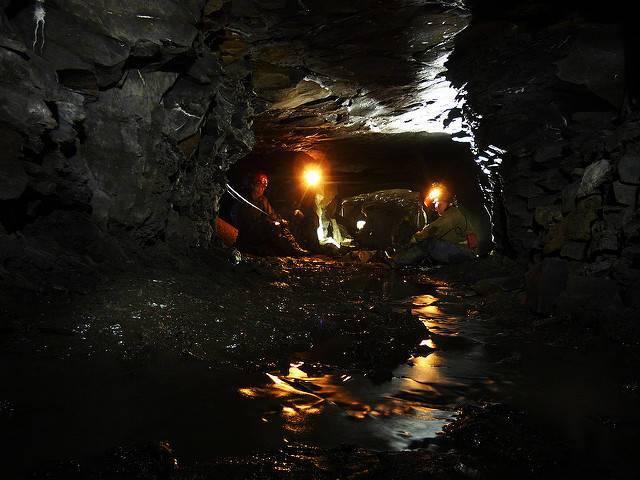

U.S. President Donald Trump built his campaign around the promise to bring back coal mining jobs, but so far his rhetoric has failed to produce meaningful action on behalf of coal miners. Coal power plants are still shutting down at a rapid clip, and another major coal producer has just declared bankruptcy. Adding insult to injury, the Trump administration appears ready to put federal coal mining safety regulations out to pasture.
That's a triple whammy for an employment sector that has been bleeding jobs for generations, and the number of workers directly involved in coal extraction currently hovers below the 20,000 mark.
Coal miners and mine safety
For all the support that Trump enjoys in coal mining communities, mine safety is a deeply emotional issue that reaches back through generations of fear and heartache.
In just one historic hotspot for coal mine activity, West Virginia, more than 21,000 coal miners have died in mining accidents since 1883.
Single-death accidents prevailed in the early years of West Virginia coal production. As mining activity increased, so did the rate of disasters defined in terms of multiple deaths. In 1907 the mine safety issue reached critical mass with an explosion at two connected mines owned by the Fairmont Coal Company. The official death toll reached 361, with possibly more deaths unrecorded.
Though the number for any single disaster never reached the level of the Fairmont catastrophe, death tolls in the double and even triple digits remained common.
The most recent large-scale coal disaster occurred in 2010, when 29 coal miners were killed at a Massey Energy's Upper Big Branch mine. In a high profile court case following the incident, the company's former CEO, Don Blankenship was alleged to have conspired to violate safety rules. Here's the rundown from Mother Jones:
The four-count indictment describes a culture of negligence under Blankenship’s watch, in which essential safety measures were ignored as the company sought to squeeze every last cent out of the ground.
Why is Trump messing with mine safety?
West Virginia is just one state. Multiply that across Appalachia and other coal regions, and the numbers add up. 1907 was the worst year in modern U.S. history, with a nationwide toll of 3,242 deaths.
Improved federal safety rules, combined with other factors like a drop in the coal labor force, bring the count down steadily. On its current mine safety page, the Department of Labor notes the pattern over recent years:
...From 2006-2010, the yearly average number of fatalities in coal mining decreased to 35. In 2009, there were 18 recorded coal mining deaths, a record low number. Sadly, coal mining fatalities dramatically increased to 48 in 2010, with the tragedy at the Upper Big Branch Mine claiming 29 lives in addition to the 19 other coal miners killed that year. In 2011, 21 coal miners were killed in accidents. 2012 saw 19 coal miners killed in accidents.
Unfortunately, fatalities could be rising again. As of November, there were 14 deaths nationwide among coal miners compared to a record low of eight in all of 2016. At least six of those deaths occurred in West Virginia.
Coal industry stakeholders attribute the upward trend to inexperience, as an uptick in coal production this year brought miners into mines they had not previously worked. Bloomberg reports:
...They point out that almost all of the coal deaths -- including Hatfield’s -- have involved workers who’d been employed at their current mine for less than a year. Overall U.S. coal output is up 15 percent through the end of July...
Softening up coal safety regulations...or not
In June, the Department of Labor stepped up a program of sending inspectors into mines to assist with safety management, a strategy that the United Mine Workers of America has criticized for being toothless and ineffective.
Now the Trump administration appears set to reduce mine safety regulations.
The proposal is part of Trump's "two-for-one" plan for reducing the number of federal regulations. The Mine Safety and Health Administration (MSHA) is currently taking recommendations on which safety regulations to cut:
On February 24, 2017, President Trump signed Executive Order 13777, entitled “Enforcing the Regulatory Reform Agenda.” This Executive Order directs each agency to review existing regulations to assess compliance costs and reduce regulatory burden. As part of this review, MSHA seeks stakeholders’ assistance in identifying those regulations that could be repealed, replaced, or modified without reducing miners’ safety or health.
Please send your recommendations to [email protected].
Perhaps there are useless regulations, but maybe not. The two-for-one approach has been roundly criticized as shortsighted and oversimplified. That includes Phil Smith, communications director for the United Mine Workers, as cited by the Post:
Smith called it “crazy” that the administration had adopted an approach where for “every regulation to protect miners lives they get rid of two of them" that he says provide crucial protections to miners' lives.
If the safety regulations on the book are indeed all still important, the Trump administration risks alienating the coal miner base. In any case, it is going to be difficult to roll back those regulations -- useless or not.
According to the Post's sources, any attempt to tinker with mine safety rules will run into "strong explicit language in the Mine Act" that is likely to prevent any significant relaxation of safety standards.
Whither coal?
Coal miners appear to believe that this year's uptick in coal production signals a long term trend, and, as a result, retraining courses aimed at coal miners are undersubscribed.
That view may be overly optimistic. Coal power plants have continued to close at a rapid clip during the Trump administration, and earlier this week the ripple effect touched off the first coal company bankruptcy under Trump's presidency (the company, Armstrong Coal, produces thermal coal for power plants).
Another major coal company, Murray Energy, may be the next to declare bankruptcy as its troubles mount.
Though Trump has cited his industry-friendly approach as the driving force behind the recent increase in U.S. coal production, it appears to be too little, too late. Cheap natural gas continues to push coal out of power production, global forces and technological advances are making the pivot to renewable energy all but inevitable.
Interestingly, analysts also point to natural gas as one reason why Trump's policies have little if anything to do with coal's good fortunes under his administration:
Rather than Trump's deregulation, analysts say a recent uptick in coal production has been driven by higher exports to Asia and natural gas prices that have stopped plunging.
In consideration of the role of natural gas, it's important to note that the fall of the U.S. coal industry has occurred without any significant help from President Obama's Clean Power Plan. The plan never went into effect and has been held up in court since 2016.
Nevertheless, Trump made rescinding the Clean Power Plan a centerpiece of his presidential campaign and he is following through.
In the latest development, on Thursday the U.S. Environmental Protection Agency announced that it will hold a two-day hearing for public comment on Trump's proposal to rescind the Clean Power Plan, on November 28 and 29 at the West Virginia state capitol of Charleston.
The choice of location is somewhat ironic, considering the number of coal deaths this year in West Virginia. Adding to the irony is this comment from EPA chief Scott Pruitt:
“The EPA is headed to the heart of coal country to hear from those most impacted by the CPP and get their comments on the proposed Repeal Rule. The agency looks forward to hearing from all interested stakeholders.
If you'd like to add your two cents, EPA says it will be posting registration information at this link: epa.gov/stationary-sources-air-pollution/electric-utility-generating-units-repealing-clean-power-plan.